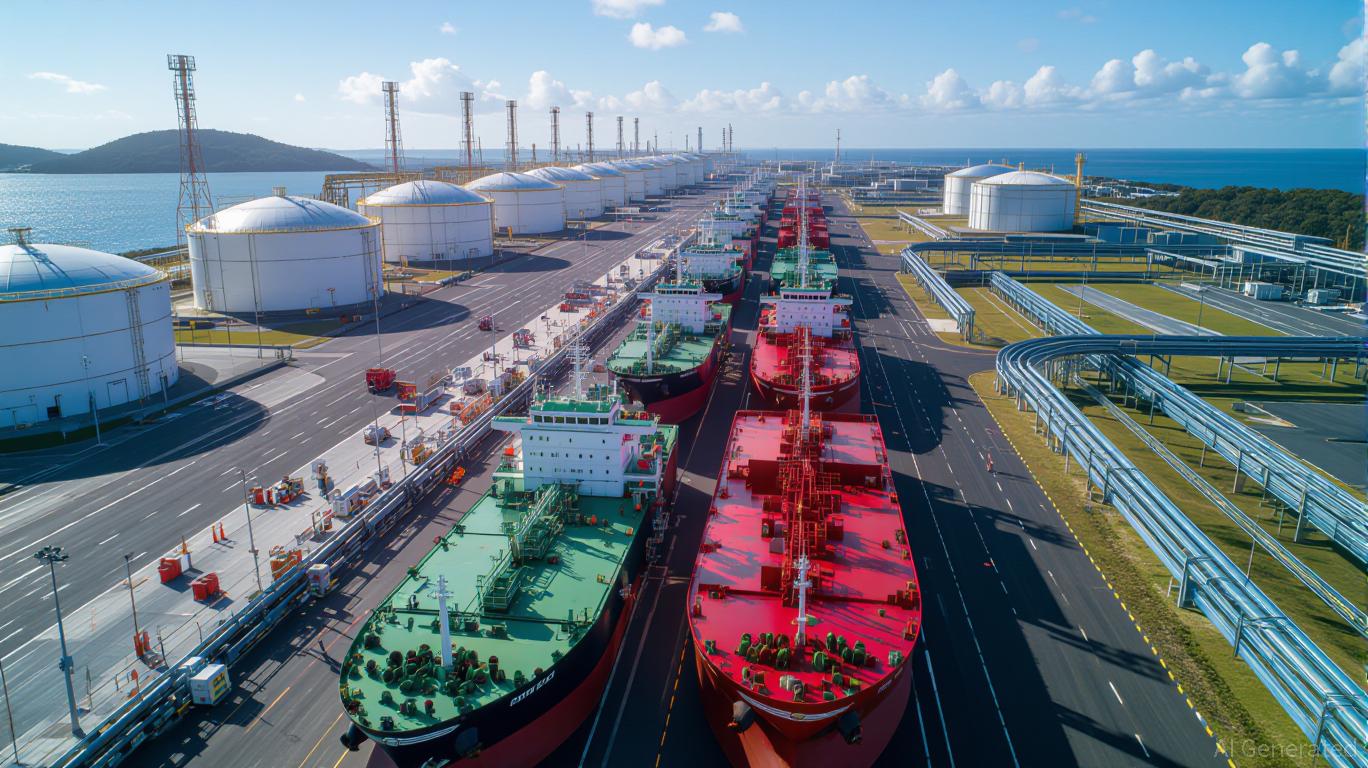
The proposed $18.7 billion acquisition of Australia’s Santos Ltd by a consortium led by Abu Dhabi National Oil Company (ADNOC) represents one of the most consequential transactions in the global energy sector. For investors, the deal raises critical questions about regulatory hurdles, strategic alignment, and geopolitical risks. Yet, it also signals a bold repositioning of ADNOC as a global liquefied natural gas (LNG) powerhouse. This article dissects the risks and rewards of the transaction, offering insights for investors navigating the evolving energy transition landscape.
Regulatory Hurdles: A High-Stakes Balancing Act
Australia’s Foreign Investment Review Board (FIRB) will play a pivotal role in determining the deal’s fate. Santos’ control over critical infrastructure—such as the Gladstone LNG terminal and domestic gas plants in Western Australia—has raised concerns about foreign ownership of strategic assets. The Australian government, under Prime Minister Anthony Albanese’s Labor administration, has prioritized domestic gas security amid a looming east coast shortage by 2027.
To address these concerns, the ADNOC-led consortium has pledged to maintain Santos’ headquarters in Adelaide and accelerate development of untapped projects like the Narrabri and Beetaloo shale gas basins. These commitments aim to demonstrate that the acquisition will bolster, rather than undermine, Australia’s energy security. However, the inability to easily spin off Santos’ domestic gas infrastructure complicates regulatory approval.
Strategic Rationale: ADNOC’s Global LNG Ambitions
For ADNOC, the Santos acquisition is a strategic masterstroke. The consortium gains access to Santos’ existing LNG terminals in Gladstone and Darwin, as well as stakes in the PNG LNG and undeveloped Papua LNG projects. These assets position ADNOC to capitalize on Asia-Pacific demand growth, where LNG is increasingly seen as a bridge fuel in the energy transition.
XRG, ADNOC’s investment arm, aims to build an LNG business of 20–25 million metric tons per annum by 2035. The Santos deal accelerates this goal, leveraging Santos’ operational expertise and existing infrastructure. Additionally, ADNOC’s carbon capture and storage (CCS) capabilities—demonstrated in projects like the UAE’s Habshan—align with Santos’ Moomba CCS initiative, addressing decarbonization pressures.
Geopolitical Risks: Navigating a Fractured Energy Landscape
The deal’s timing coincides with heightened geopolitical tensions in the Middle East, which have driven oil prices to multi-year highs. ADNOC’s expansion into Australia and Papua New Guinea diversifies its geographic footprint, reducing reliance on politically volatile regions. However, the acquisition also exposes ADNOC to scrutiny in Western markets, where concerns about foreign subsidies and state-owned enterprises are intensifying.
The European Commission’s ongoing review of ADNOC’s $16.4 billion acquisition of Germany’s Covestro highlights this trend. While the Santos deal is smaller in scale, similar scrutiny could arise in Australia, particularly if regulators perceive it as a threat to national interests. The recent Australia-UAE Free Trade Agreement may mitigate some concerns, but the final decision rests with Treasurer Jim Chalmers, who has emphasized adherence to FIRB recommendations.
Investment Implications: Weighing the Risks and Rewards
For investors in the LNG and energy transition sectors, the Santos deal offers both opportunities and uncertainties. If approved, the transaction could catalyze a wave of cross-border M&A as energy majors seek to scale their LNG portfolios. ADNOC’s deep pockets—backed by $150 billion in 2023–2027 capital expenditure—position it to outperform peers in capital-intensive projects.
However, regulatory delays or rejections could trigger share price volatility for Santos, which has already seen a 15% intraday jump following the bid announcement. Investors should monitor key milestones: the August 22, 2025, due diligence deadline, the negotiation of a binding scheme implementation agreement, and the 75% shareholder approval threshold.
Conclusion: A High-Risk, High-Reward Bet
ADNOC’s Santos bid is a testament to the evolving dynamics of the global energy market. While regulatory and geopolitical risks remain significant, the consortium’s strategic commitments—such as maintaining local operations and accelerating gas projects—could sway regulators. For investors, the deal represents a high-stakes opportunity to bet on ADNOC’s LNG ambitions and the broader energy transition.
Investment Advice:
– Long-term investors with a high risk tolerance may consider overweighting ADNOC or Santos shares if regulatory hurdles are resolved favorably.
– Short-term traders should watch for volatility around key regulatory announcements and adjust positions accordingly.
– Diversified energy portfolios should balance exposure to LNG plays like ADNOC with renewable energy assets to hedge against sector-specific risks.
In the end, the Santos acquisition is not just about ADNOC’s global ambitions—it’s a barometer for the future of LNG in a world racing to decarbonize. The outcome will shape the sector for years to come.
